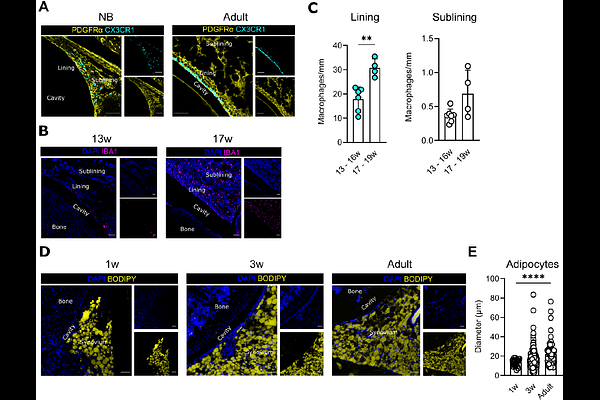The synovial lining macrophage layer develops in the first weeks of life in a CSF1- and TGFβ- dependent but monocyte-independent process.

The synovial lining macrophage layer develops in the first weeks of life in a CSF1- and TGFβ- dependent but monocyte-independent process.
Magalhaes Pinto, M.; Malengier-Devlies, B.; Seuzaret, G.; Ahlback, A.; Becker, S.; Patatsos, K.; Drakoulis, G.; Karjalainen, J.; Ruedl, C.; Voehringer, D.; Bain, C.; Emmerson, E.; Schonfeldova, B.; Zec, K.; Udalova, I. A.; Simakou, T.; MacDonald, L.; Kurowska-Stolarska, M.; Miotla-Zarebska, J.; Vincent, T.; Ricci, R.; Erbs, E.; Barrington, J.; McColl, B.; Neag, G.; Kemble, S.; Mahony, C.; Croft, A.; Boon, L.; Migotsky, N.; Killian, M.; Brahim, O. B.; Uderhardt, S.; Gallerand, A.; IVANOV, S.; Gentek, R.
AbstractSynovial joints harbor a protective lining layer, consisting of fibroblasts and macrophages, which form an epithelial-like barrier. In inflamed joints, lining macrophages regulate both early inflammatory cell influx and resolution. Despite these critical functions, it is currently unknown at what stage during development the synovial macrophage lining is established, and which signals drive this process. Here, we use a combination of genetic models and in vivo perturbations, single cell transcriptomics and imaging to delineate the process of lining formation in mice. We find that the synovial lining is immature at birth and becomes established within the first 3 weeks of life. In this window, the lining is gradually populated with macrophages that originate from fetal sources, proliferate and acquire the lining-specific transcriptional identity. In contrast, monocytes contribute only minimally to the developing lining, and their input remains limited in healthy adulthood. We identify CSF1 and TGF{beta} as key signals in this process, which also involves mechanosensing through PIEZO1. Our study thus identifies the early postnatal window as a critical period for lining macrophage development, with potential lifelong impact on joint health and disease.